ECOLOGY LAB 9 - PREDATION (BOLDED TERMS)
1/18
There's no tags or description
Looks like no tags are added yet.
Name | Mastery | Learn | Test | Matching | Spaced |
|---|
No study sessions yet.
19 Terms
Predation
is a class of "+/-" interactions in which one organism quickly subdues and consumes another living organism (the prey).
Gizzard
Birds have a ________ that helps grind their food (owls do not have a crop to store food like many other birds).
Crop
Owls do not have a _____ to store food like many other birds
Virginia Opossum (Didelpha Virginiana)
- Marsupial mammal
- Large chisel-like incisors.
- Five pairs of upper incisors, small brain case, obvious sagittal crest, nasals expanded posteriorly; palatine vacuities present between molar tooth row
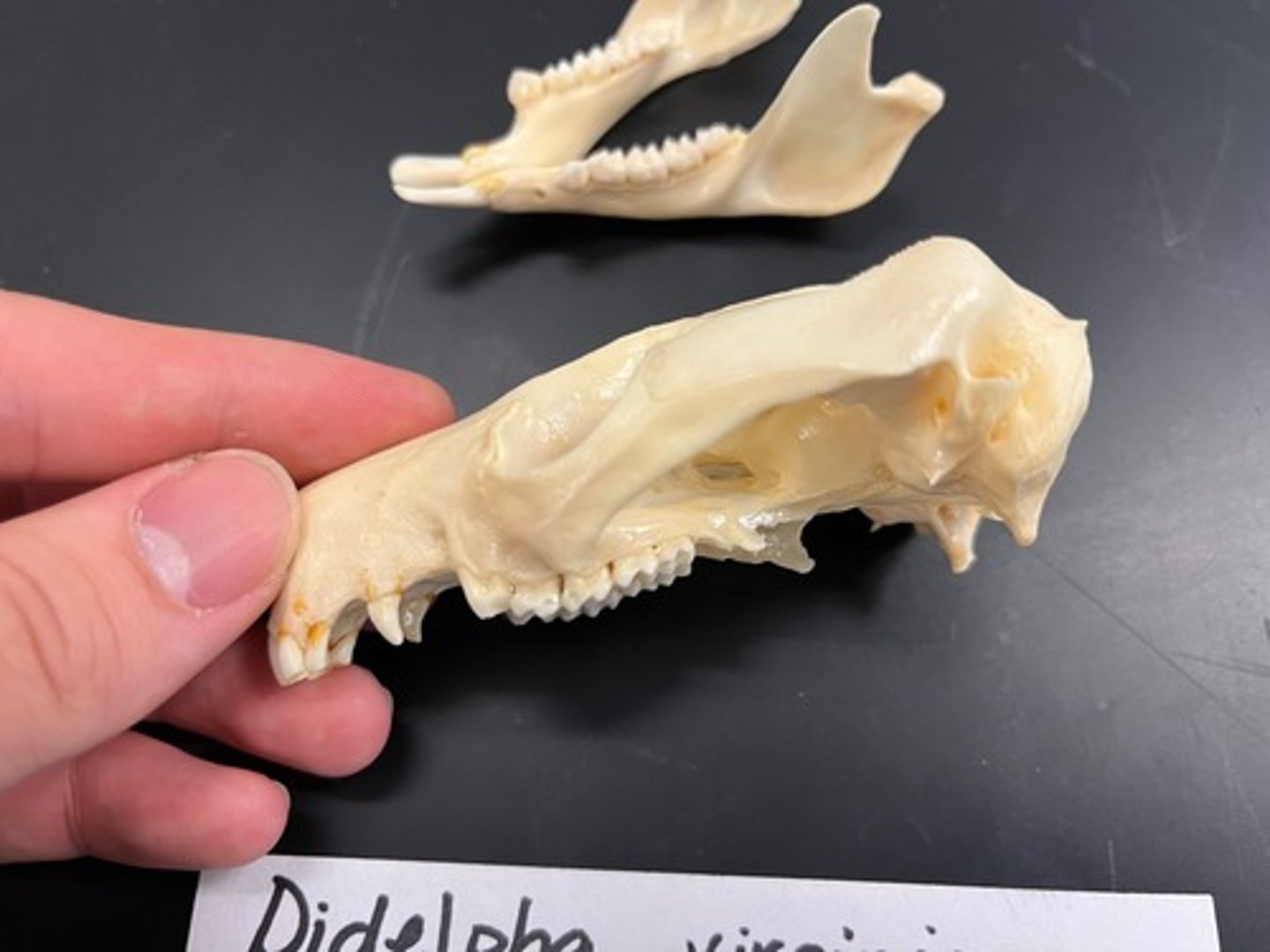
Order Artiodactyla (deer, cattle, pigs, sheep)
- Placental mammals
- even number of toes (2 or 4),
- the skull for one suborder, Ruminantia,
- has no upper incisors.
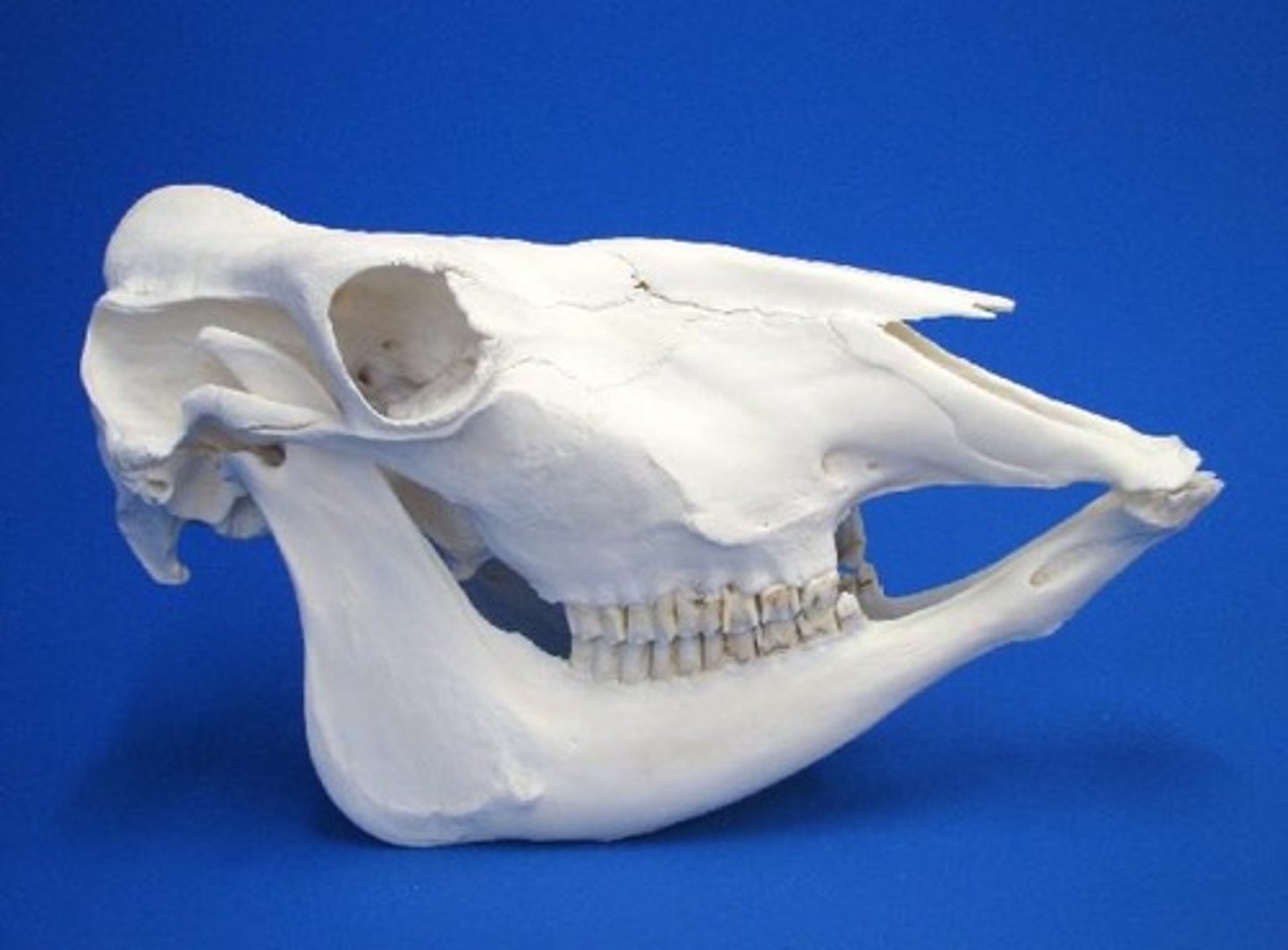
Order Carnivora - (dogs, wolves, foxes, cats, bears, otters, weasels)
- Placental mammals
- the fourth premolar on the maxilla and first molar on the mandible are called carnassial teeth and adapted for shearing flesh in having a knife-like edge.

Order Eulipotyphla - (shrews, moles, hedgehogs
- Placental mammals
- sharp pointed teeth,
- molars have sharp cutting edges,
- no diastema.
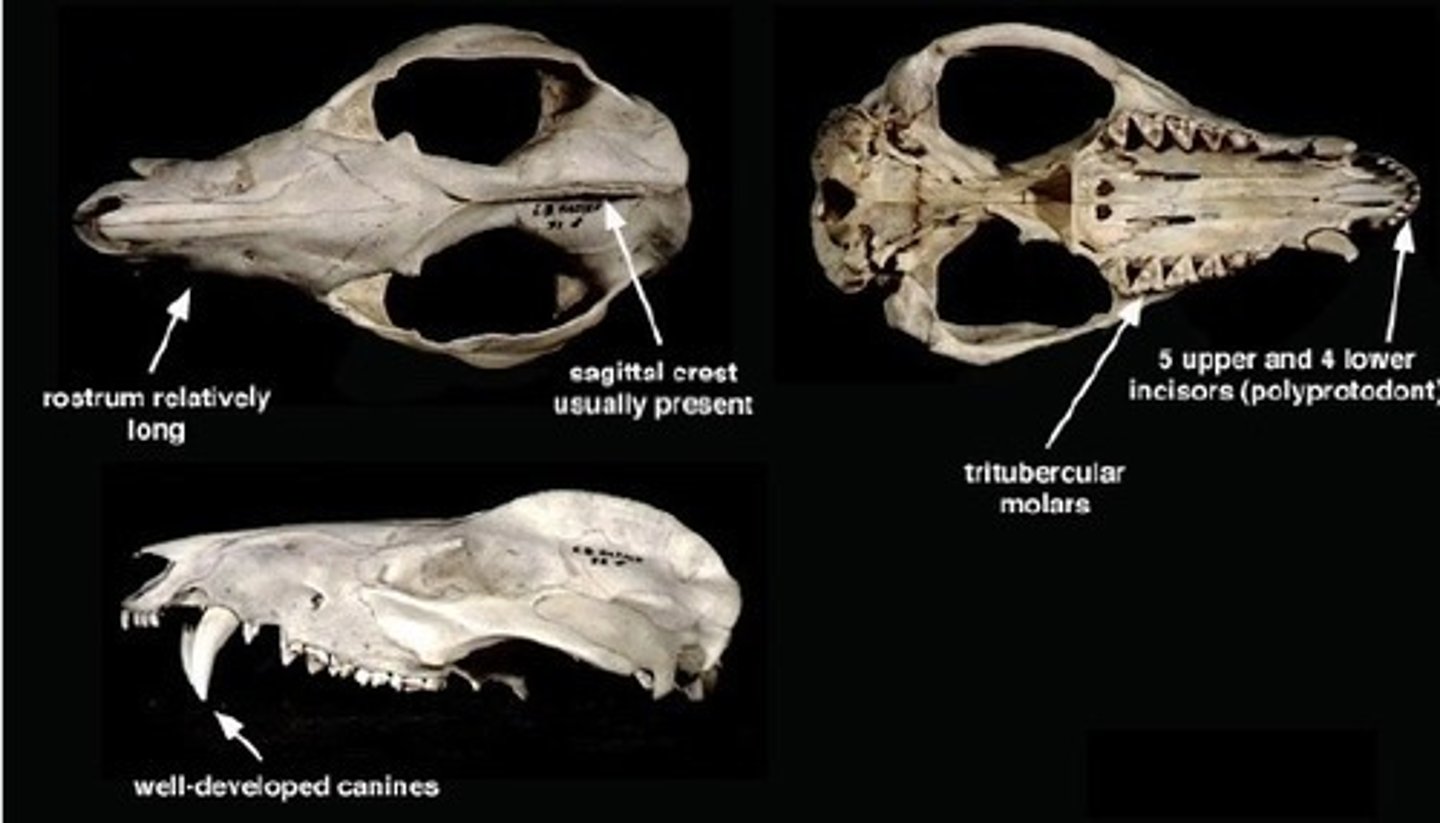
Order Lagomorpha - (hares, rabbits, pikas)
- Placental mammals
- two pairs of upper incisors, the second pair minute and directly behind the first;
- six pairs of upper cheek teeth;
- maxillary portion of rostrum fenestrated
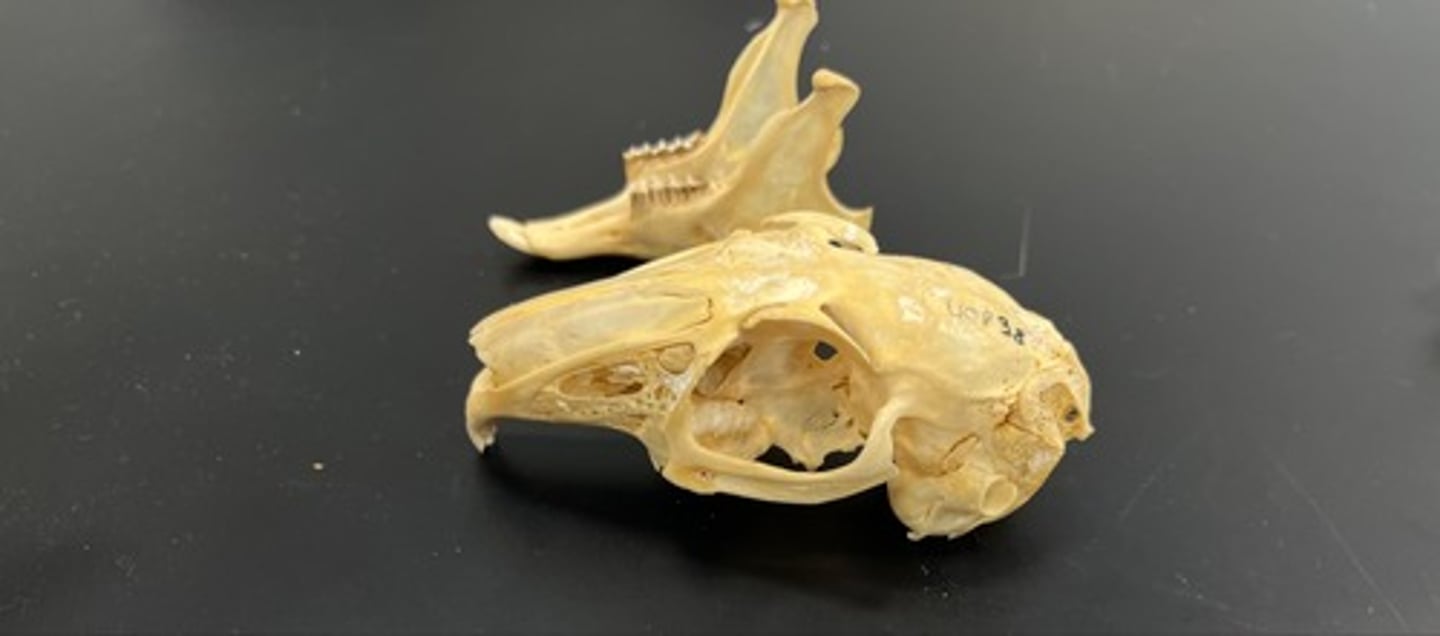
Order Rodentia
- large space (diastema) separates upper and lower incisors from cheek teeth (premolars and molars),
- no canine teeth.

Beechey's Ground Squirrel (Spermophilus beecheyi)
- Part of Rodentia
- Large ground squirrel, gray brown mottled by light flecks.
- No stripes.
- The skull has the interorbital space and postorbital widths about equal.
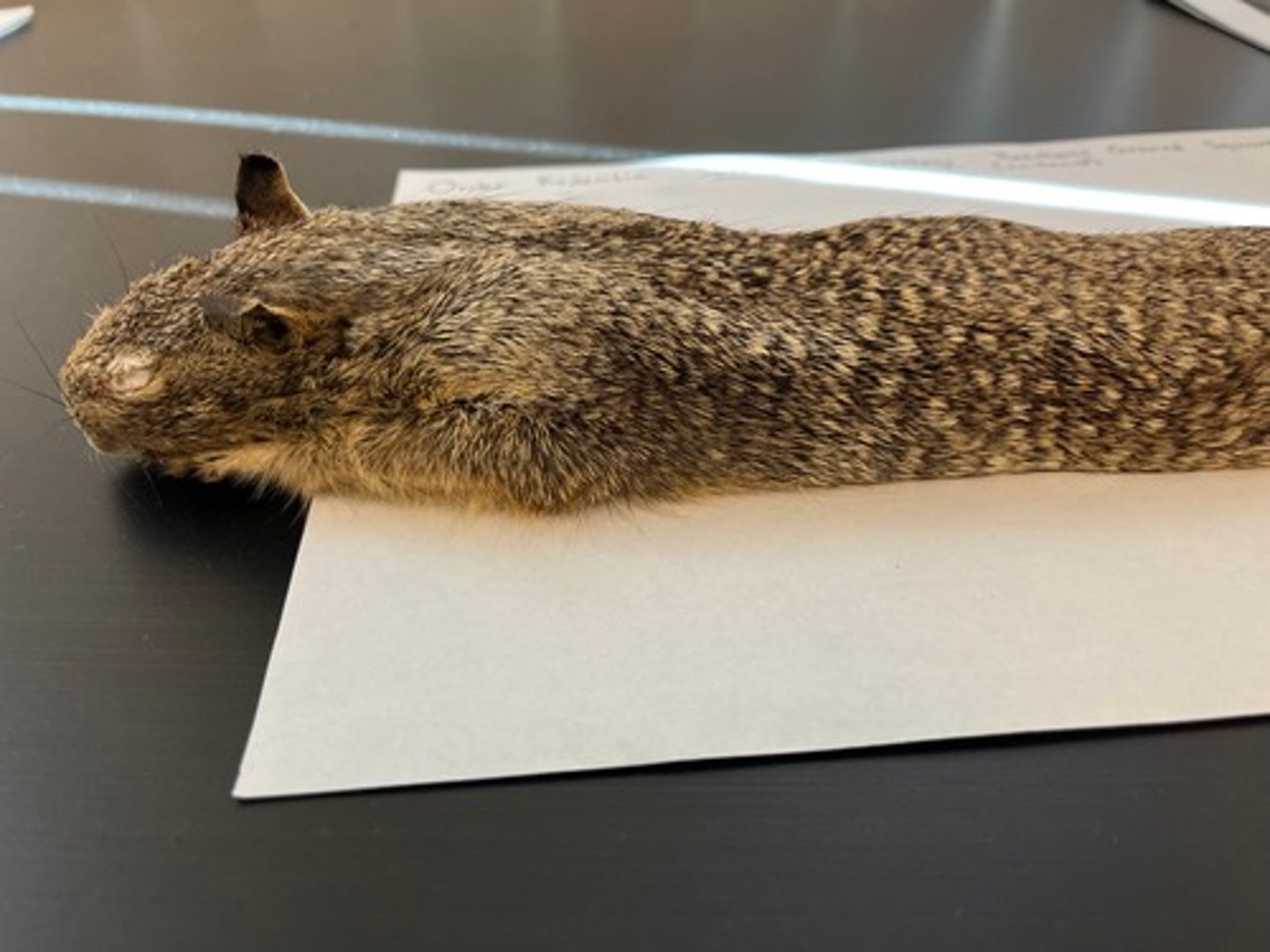
Western Gray Squirrel (Sciurus griseus)
- Part of Rodentia
- Large, silver gray squirrel with grizzled salt- and-pepper dorsum and white venter.
- Upper premolar is small and peglike.

Botta's Pocket Gopher (Thomomys bottae)
- Part of Rodentia
- Four pairs of upper cheek teeth.
- Distinct and deep sphenoidal fissure.
- Incisive foramen located anteriorly near incisors.
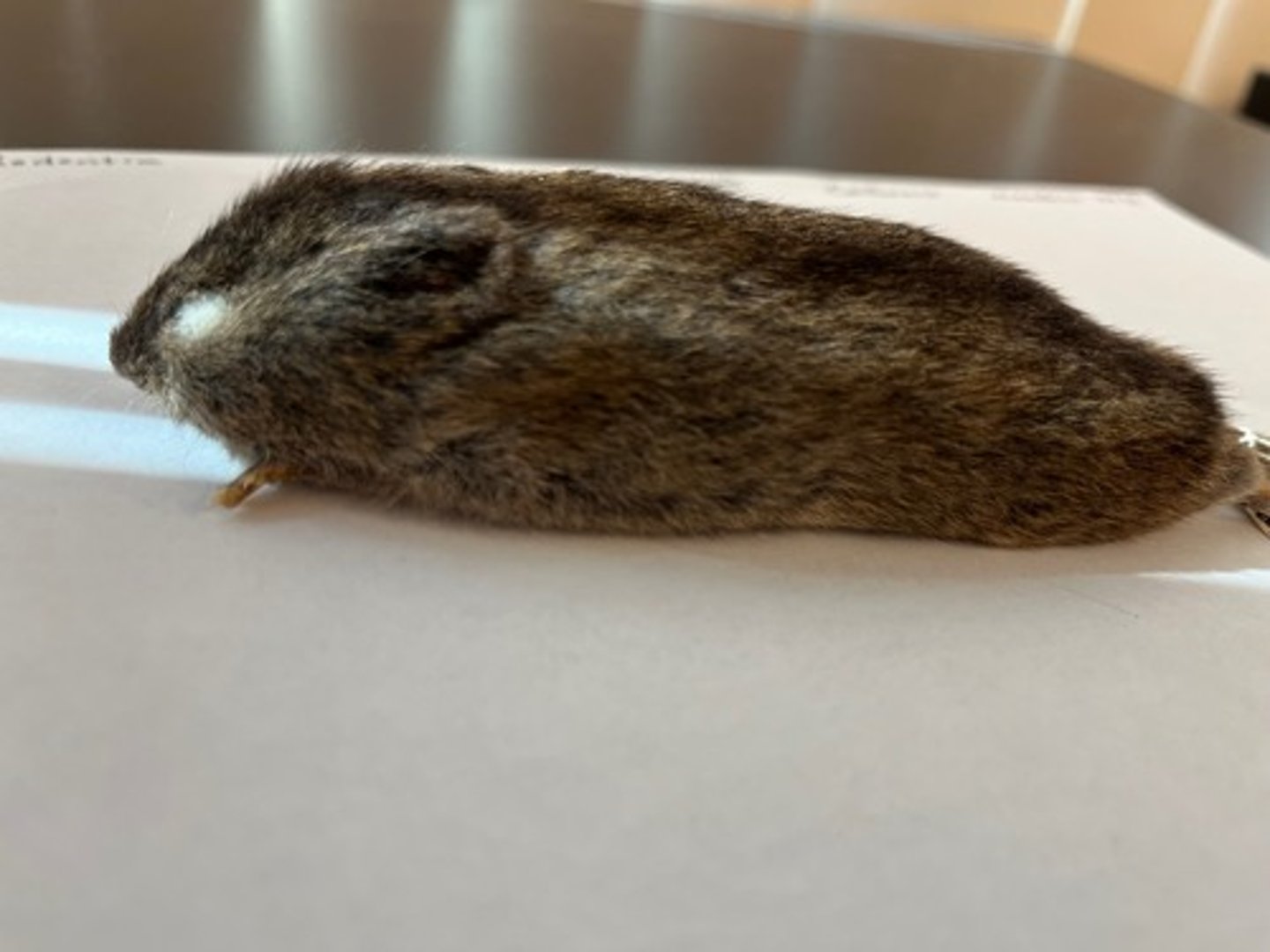
California Meadow Vole (Microtus californicus)
- Part of Rodentia
- Six plantar tubercles.
- Incisive foramina not constricted posteriorly.

Deer Mouse (Peromyscus)
- Part of Rodentia
- Cheek teeth have two long rows of bumps along their top surface.

Harvest Mouse (Reithrodontomys megalotis)
- Part of Rodentia
- Deeply grooved anterior face of upper incisors.
- Similar looking to House Mouse but smaller.
- Jumping mice which also have grooved upper incisors, are distinguished by large infraorbital foramen and long foot (2x as long as ear).
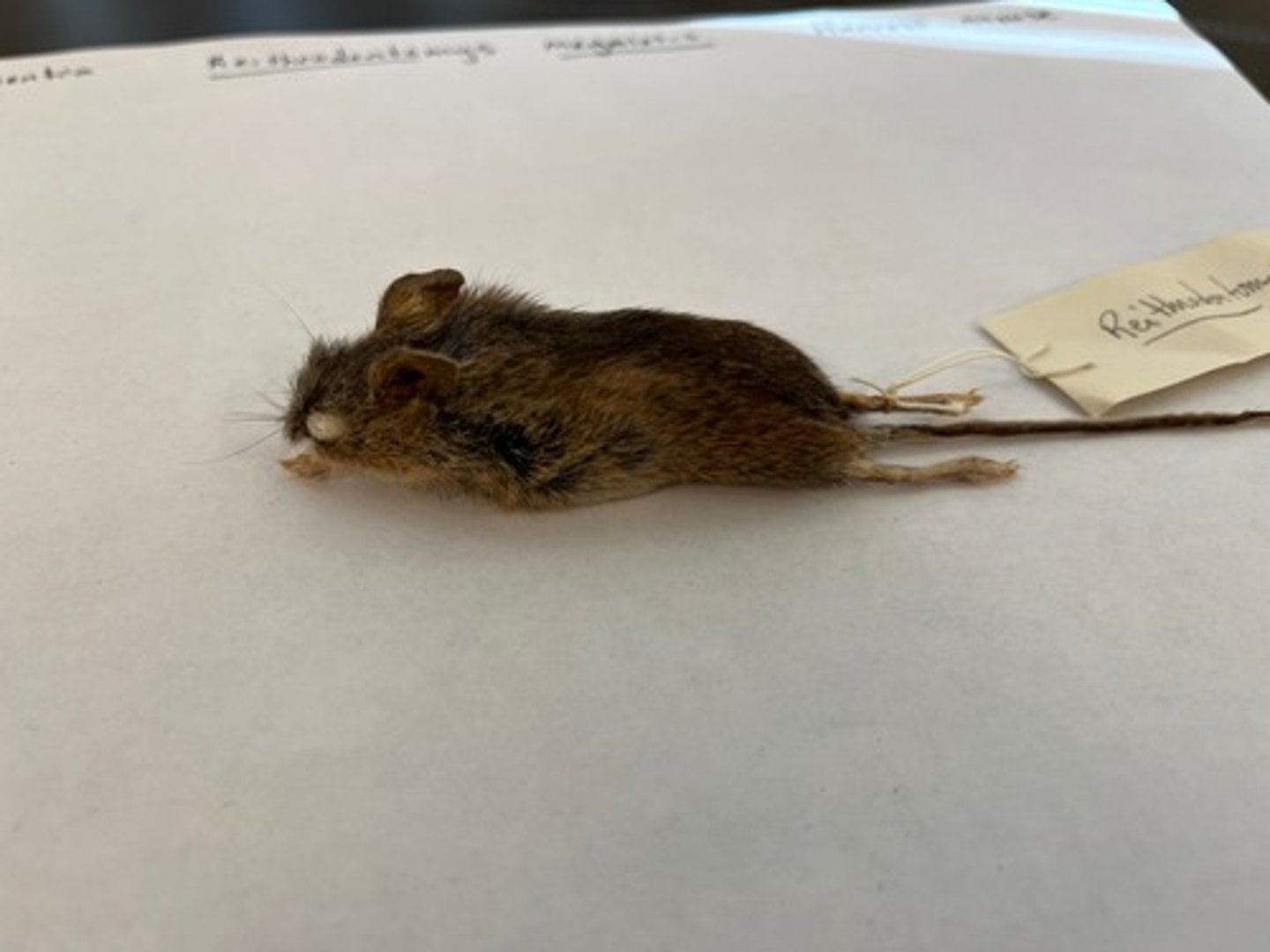
House Mouse (Mus musculus)
- Part of Rodentia
- Small and variously colored.
- Dorsum may be brown, dark brown, grayish or buff; venter is buff to dark gray brown.
- Tail is long, uncolored and almost hairless.
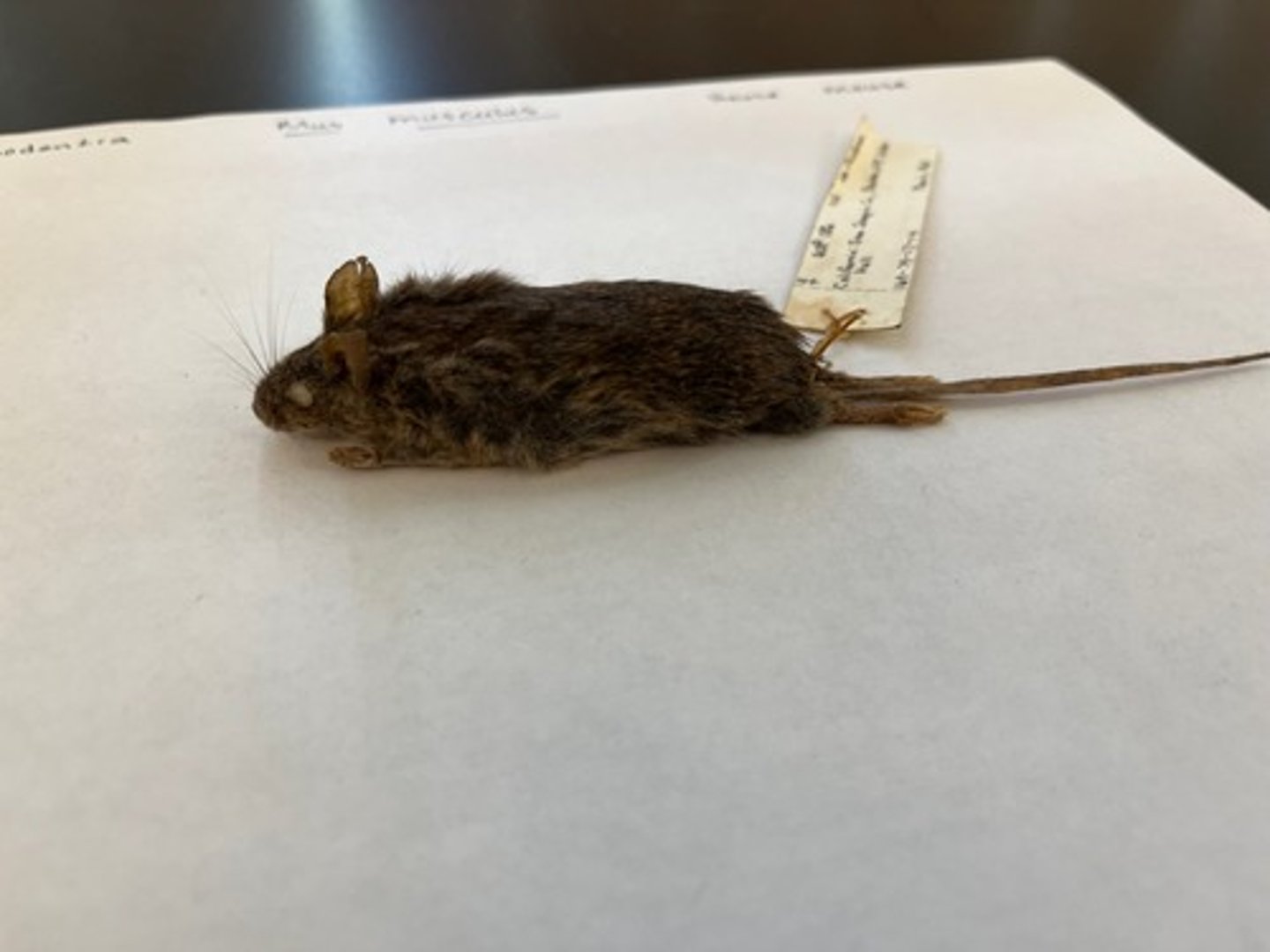
Whole, pellet
Owls specifically provide an opportunity to study predator diet and food webs because of their habit of eating prey ______ and forming a _______
Crop, gizzard
In owls, although they don't have a _____ like other birds, their ________ traps the bones and fur or feathers of prey as it is digested
Regurgitates
The owl ______________ the gizzard material as a pellet below their roost